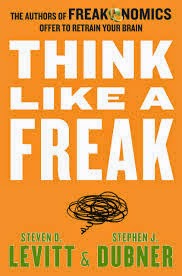Labor Day is here! If you are going to the beach this weekend, keep in mind that nonfiction can make good beach-reading, too. Unlike the plot of the latest thriller, the lessons taught in these three recent books might outlast your vacation.
Virtual Unreality, by award-winning science journalist Charles Seife, author of Zero, Sun in a Bottle, and Proofiness (a personal favorite), looks at the dark side of the “ultimate information revolution” engendered by the internet and the proliferation of digital information. Internet imposters (“sock puppets”), scams, and hoaxes prey on the even the most sophisticated computer users. eBooks, print on demand, and digital self-publishing swamp us with e-dross. (Check out Amazon’s 101-page list of “books” by Philip E. Parker.) Wikipedia, aggregation, and other “reporting” phenomena degrade the reliability of information and reinforce error. Filtered newsfeeds and “narrowcasting” by special interest blogs heighten our differences of opinion and validate extremism. Commercial interests use “gamification” and the pressure of social networks to shape our brains and our behavior to their advantage (Farmville players, he’s looking at you.) There’s more, and Seife’s readable, amusing prose will entertain even as it makes you want to toss your iPhone into the surf. He ends with a takeaway: “The Top Ten Dicta of the Internet Skeptic”, a practical list of caveats and reminders. My favorite: “Top Ten lists are just marketing gimmicks intended for suckers.”
David J. Hand, professor emeritus of mathematics at Imperial College in London and scientific adviser to a successful algorithmic hedge fund, translates his expertise into a common-sense guide to probability for the layman: The Improbability Principle: Why Coincidences, Miracles, and Rare Events Happen Every Day. That person who won the lottery three times? The October, 1987 stock market crash? Abraham Lincoln’s dream that he would be assassinated? Completely explainable if you understand the “laws” of the Improbability Principle. The Law of Truly Large Numbers, the Law of the Probability Lever, and the Law of Selection respectively predict that such events will indeed occur, and occur more often than we expect. Hand begins this enlightening and entertaining book by exploring the ideas of “chance”, “fate”, “randomness” and other expressions of the capriciousness of the universe. He follows with an easily graspable introduction to the sometimes counterintuitive mathematics of probability, and continues with chapters on the “laws” that together comprise the Improbabilty Principle. He discusses the way the human brain is wired to look for patterns where none exist and other biases that undermine our ability to acknowledge the principle and its laws. Examples abound, and by the time you finish the book, you will be seeing these laws in action everywhere you look. (A coincidence?) Like Seife, Hand leaves us with practical lessons on how a skeptic might use the principle to discern mistaken predictions, detect fraud and hyperbole, and distinguish what is meaningful from what is merely statistically significant.
Internet blogs are all about lists (see Seife) and things come in threes (see Hand), so of course I have a third recommendation: Think Like a Freak, by economist Steven D. Levitt and journalist Stephen J. Dubner, authors of the popular Freakonomics and Superfreakonomics. If you read them, you will recognize their trademark approach to explaining riddles of human behavior: data-driven, unconventional, often light-hearted, and sometimes controversial. This time around, the “Freaks” endeavor to teach you the qualities and techniques that make their research so successful. In breezy chapters such as “The Three Hardest Words in the English Language” (hint: they’re not “I love you) and “What’s Your Problem”, they emphasize that scientific problem-solving requires first that you admit you don’t know the answer; and second, that you correctly define the question. They also include a chapter on how to persuade people of the correctness of your answer (and how to guarantee they won’t listen to you at all) and a final one on knowing when to admit you’re barking up the wrong tree and should quit (my personal favorite!) All of this illustrated by fun stories told with a little bit of snark, many with surprising twists that I won’t give away here. (Why did the band Van Halen require that there be no brown M&M’s in their snack bowls?)
Happy Labor Day!



No comments:
Post a Comment